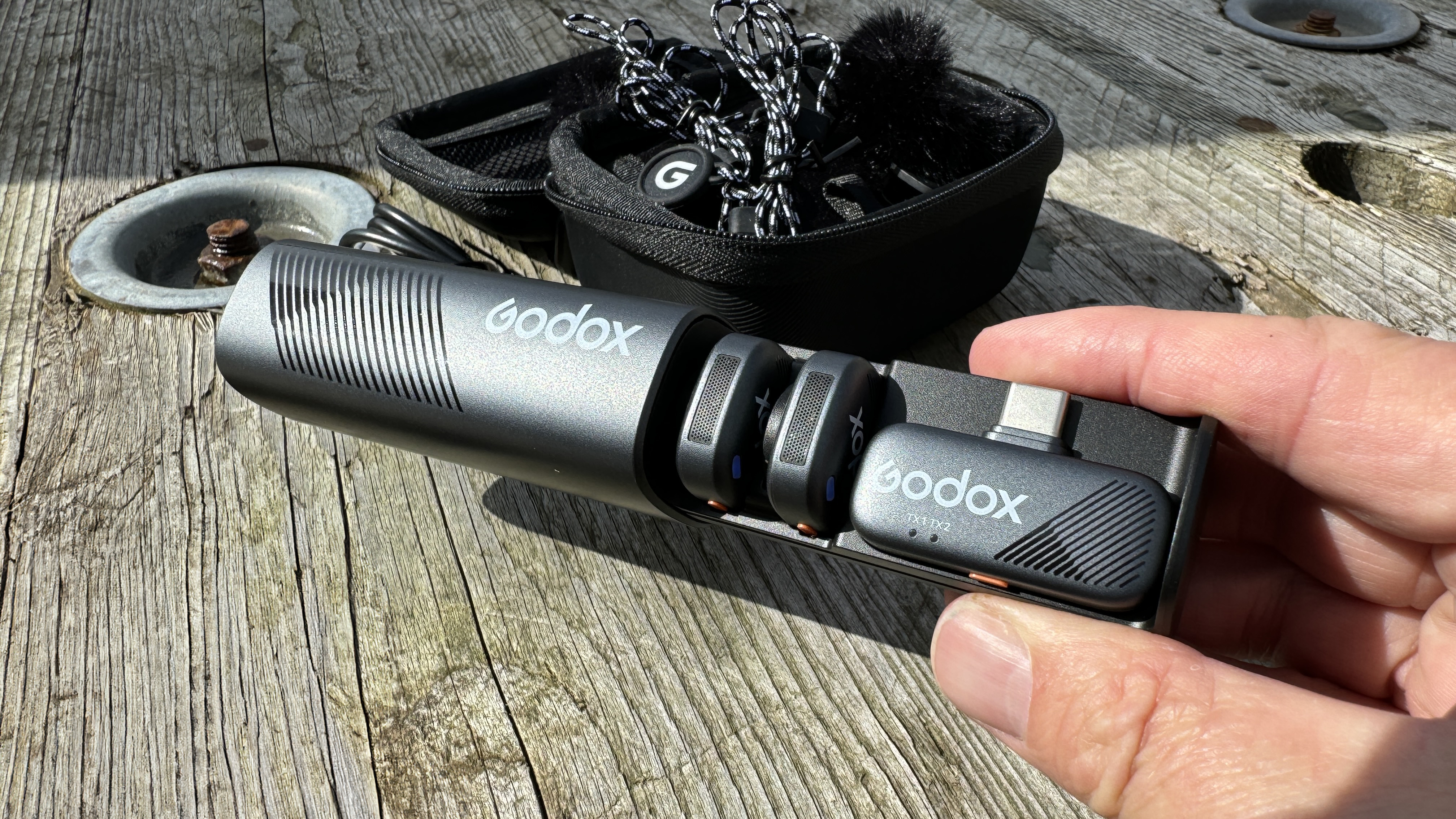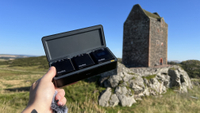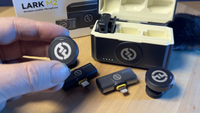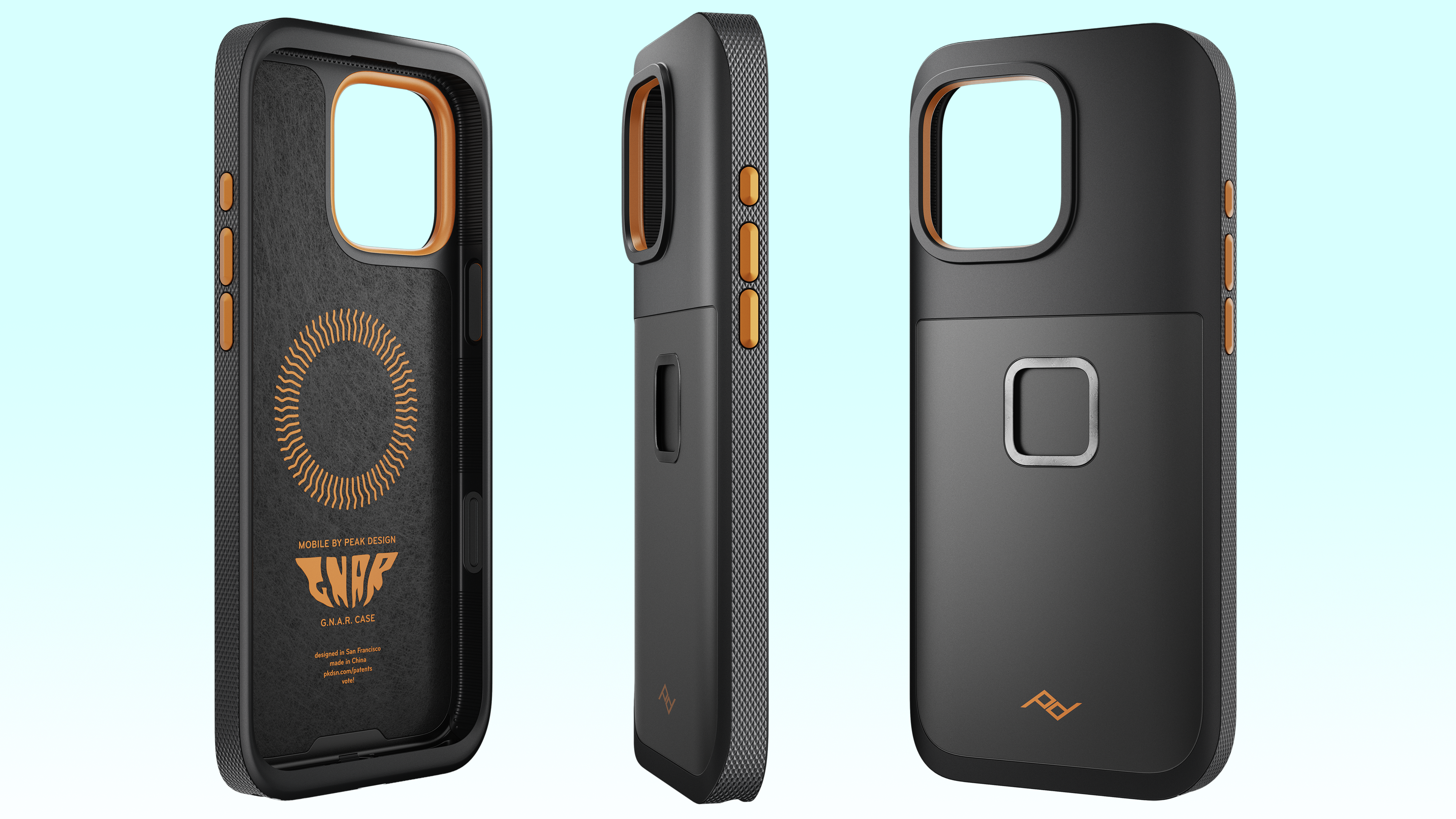Digital Camera World Verdict
The Godox Cube-SC may suffer from signal drop out more than other wireless mic kits, but when you’re facing the camera the sound is crisp and clear even when your so far away that you can barely be seen on screen. And its so small! The charging case (containing two transmitters and a receiver) fit comfortably in your pocket, so you can whip the kit out whenever you need to improve the sound quality recorded by your smartphone without carrying a dedicated kit bag around with you. Personally I can see myself keeping this useful and highly portable kit close to hand while other (larger) wireless mic kits that I’ve tested will stay on the shelf.
Pros
- +
Transmitter remote controls your Camera app to start/stop
- +
Palm-sized case fits in your pocket
- +
Discrete magnetic transmitters
- +
Smallest receiver I’ve encountered
- +
Compatible with Apple’s Find My app
Cons
- -
Signal drop out when line of sight is lost
Why you can trust Digital Camera World
Your smartphone may capture excellent quality sound when it's in your hand, but pop it on a mini tripod and take a few steps back and the sound quality will diminish. As well as your voice, the smartphone’s built-in mic will pick up unwanted ambient background sounds such as echo from walls as well as passing traffic. To keep a mic close to your mouth at all times you need a wireless mic kit such as the Godox Cube-SC. With this kit, you’ll record your voice sounding as loud and clear at 150 meters as it does at 1 meter (as long as you don’t turn away from the camera and the mic loses line of sight with the receiver).
Since 2022 I’ve reviewed 16 wireless mic kits to date, so I have plenty of comparisons - check out our best wireless mic buying guide to explore the wide range on offer. Despite being yet another wireless mic kit vying for your cash the Godox Cube-SC is worth considering as it has a few new features up its sleeve as we discovered during our test!
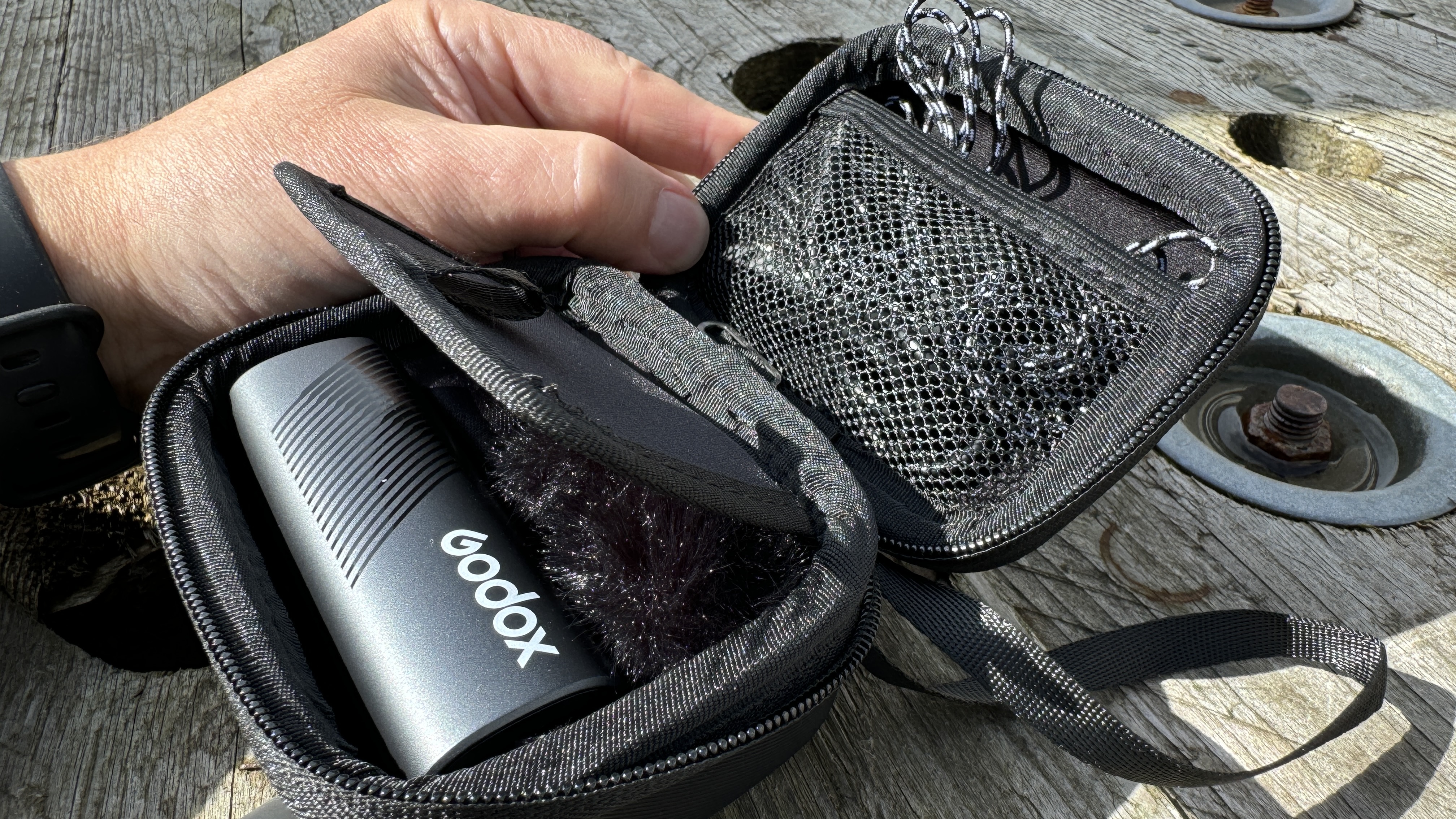
Godox Cube-SC: Specifications
| Pick-up Pattern | Omnidirectional |
| Frequency Response | 20-20KHz |
| Signal to Noise Ratio | 86 dB |
| Transmission Type | 2.4GHz Frequency Hopping |
| Onboard recording | No |
| Max Distance | 300m (with line of sight) |
| Battery Life | 10 hours |
| Net Weight | 7g |
| Dimensions | 0.96” x 0.98” x 0.49" |
| Reception Type | 2.4GHz Frequency Hopping |
| Max Distance | 300m (with line of sight) |
| Battery Life | Powered by smartphone |
| Net Weight | 5g |
| Dimensions | 1.57” x 1.04” x 0.35" |
Godox Cube-SC: Design & Handling
Although it ships in a standard robust black Godox carry case the Cube-SC itself is the smallest and lightest wireless mic kit that I’ve encountered to date. The gently curving smooth-bodied plastic charging case fits into the palm of your hand. Press the end of the charging case with your thumb and the interior pops out to reveal two tiny (less than an inch in diameter) square mic transmitters (with rounded edges) and the smallest receiver I’ve ever seen.
Until now the smallest wireless mic kit that I’d tested was the Hollyland Lark M2, but the Godox Cube-SC’s transmitters and receiver are lighter than the Lark M2’s by a couple of grams. The receiver achieves its small size because it doesn’t contain a battery. The receiver is powered from your smartphone when you plug it into your device via its USB-C connector. I used a USB-C version of the Cube-SC with my iPhone 15 Pro Max, but a Lightning connector version is also available.
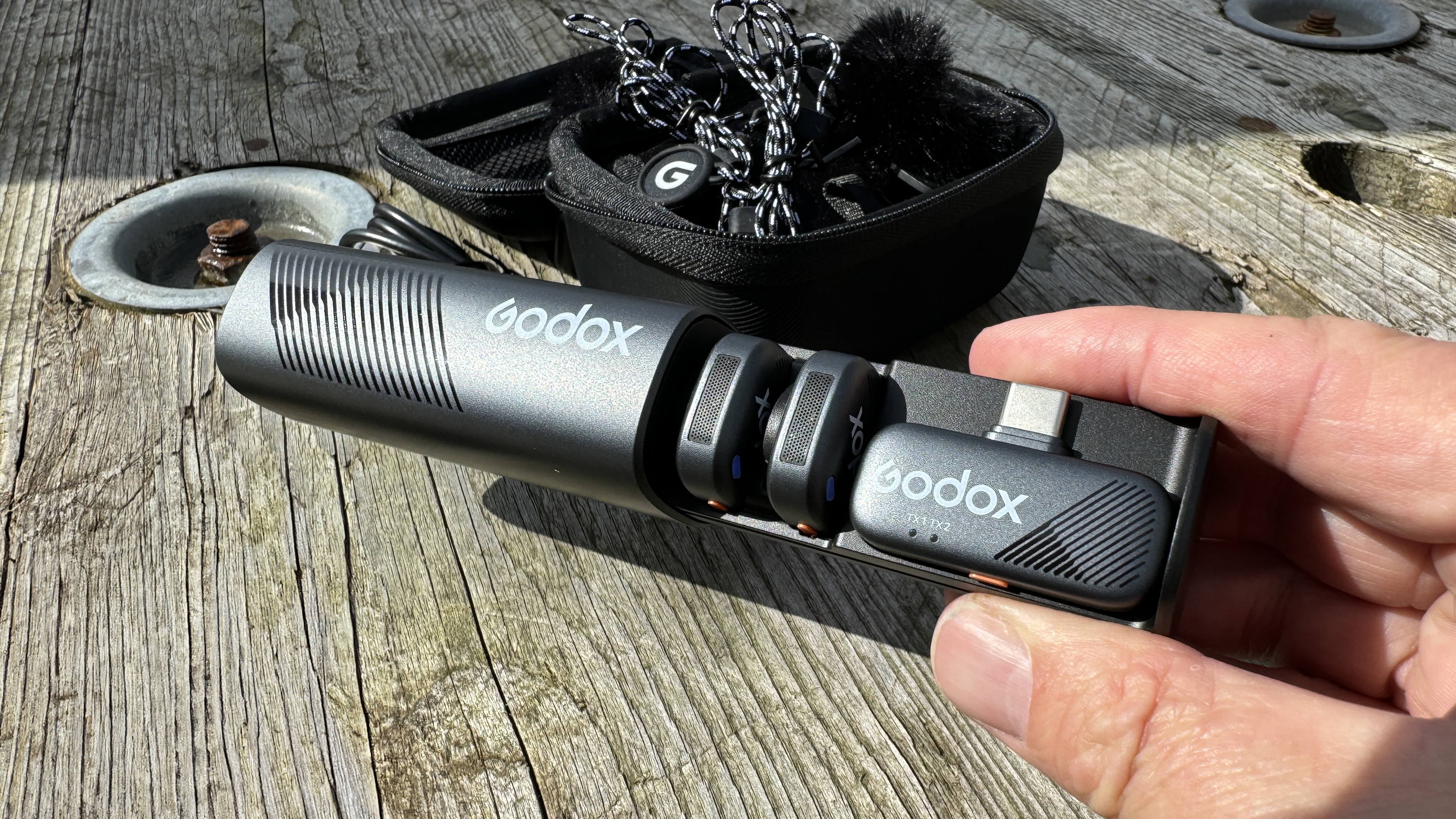
As a result of its compact size, you can pop the charging case in your pocket so that you can whip out a wireless transmitter mic and receiver if you suddenly need to record an interview or present an ‘on the spot’ chat to the camera, making this a great piece of kit for vloggers and journalists who want to travel light
The kit’s larger padded carry case still fits into one hand and this contains a wide range of accessories such as windshields, magnetic clips, and pendants that you can attach the mics to - again via magnets. The two magnetic clips offer a more traditional way to attach the mic to your lapel. The magnets are very strong and won’t come loose during normal use. You can pop the plastic charging case inside the sturdy padded accessory carry case and the whole unit will fit nicely into any kit bag to take on planned shoots.
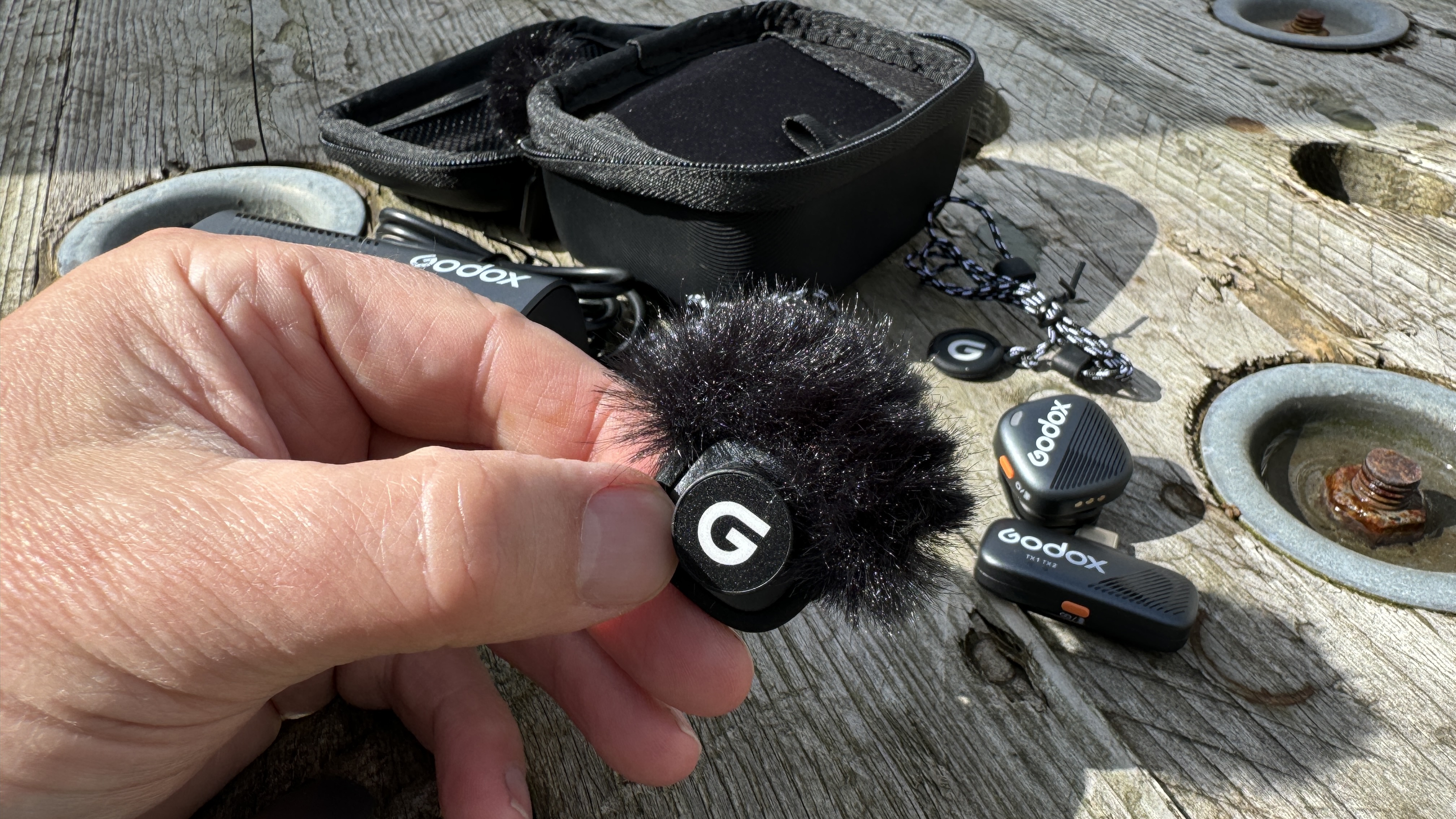
Small wireless transmitters are great if you want a subtle solution to capturing good-quality sound from a distance, but there is a danger that you could lose the magnetic mic on location. Indeed I have lost a transmitter mic in the past while doing a test.
The Kit 2 version of the Cube-SC (with its two transmitters) has a unique trick up its sleeve to help you avoid losing it. If you poke the supplied metal pin inside a tiny hole in the charging case it will become detectable by Apple’s Find My app. You can assign a microphone icon to your Cube-SC Kit and it will appear on a map in the Devices section of the Find My app. This is a very welcome feature if you’re prone to misplacing things like I am!
The marketing of the Godox Cube-SC implies that you can use Apple’s Find My app to locate a transmitter if it falls off. However when testing this claim only the charging case is tracked, not any of its displaced contents. When I left the kit at home it was nice to see a notice pop up on my iPhone informing me that I’d left my Cube-SC behind.
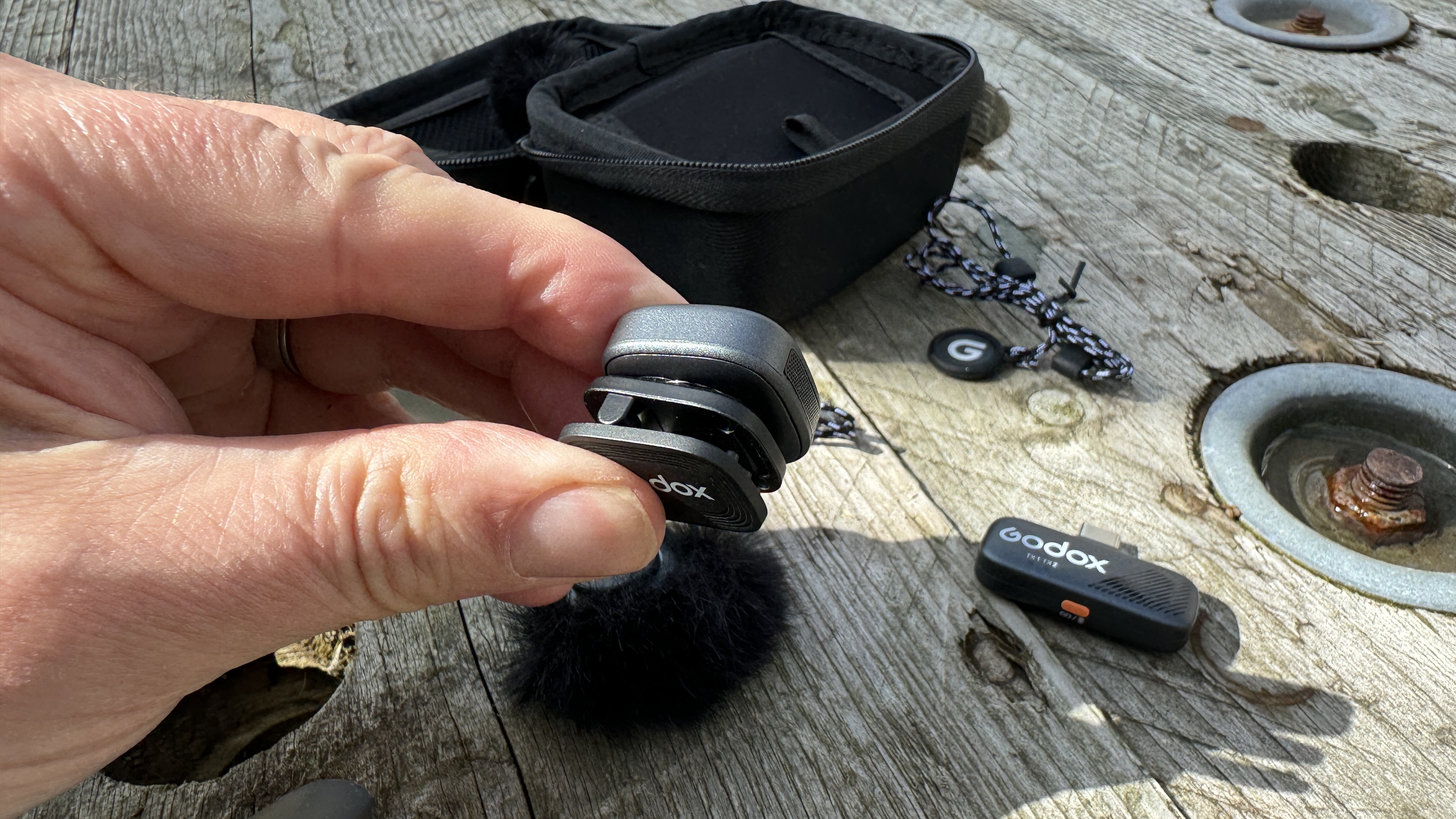
Godox Cube-SC: Performance
To test the Godox Cube-SC I took it with me on a dog walk in the sunny Scottish countryside. I popped the receiver’s USB-C plug into my iPhone 15 Pro Max and attached that to a mini Manfrotto tripod. I then walked away from the camera to perform a distance test. The transmitters and the receiver are so small that I expected a bit of signal dropout - and my expectations were accurate.
Once I’d reached 35 meters or so my transmitter mic’s signal wasn’t strong enough to transmit through my body so the audio signal dropped out intermittently. However, as soon as I turned round to face the camera (and gave the transmitter and receiver a clear line of sight) my voice sounded as loud and clear as it did from a meter away from the camera. As a 48kHz/24-bit signal, the audio quality was impressive, especially from such a small kit and the audio quality sounded great as you’ll hear from our supporting video - even at approximately 150 meters distance.
During the distance test, I stood in the middle of a rather windy field. However, by attaching the supplied windshield to the mic, there was no hint of wind noise, so that was a big thumbs up! The windshield is a different design from what I’ve experienced with other mic kits. The square transmitter mic slides into the rubber windshield (rather than you having to clip the shield to the top of the mic as with some other kits). The mic’s Noise Reduction button is hidden when the windshield is attached. At first, I thought that would be a problem as I couldn’t see if the mic’s button indicator light was green (or orange for Noise Reduction) Fortunately there’s another light on the face of the transmitter so you can see its status even when it’s wearing a windshield.
There were lots of tractors driving past my field so a quick tap on the mic’s NR button caused the unwanted background noise to dip. Software noise reduction can make the subject’s voice sound a little ‘thinner’, and that is the case here. But the thinner sound is better than being distracted by passing vehicles (or a jeep’s revving engine noise as you’ll discover in our supporting video).
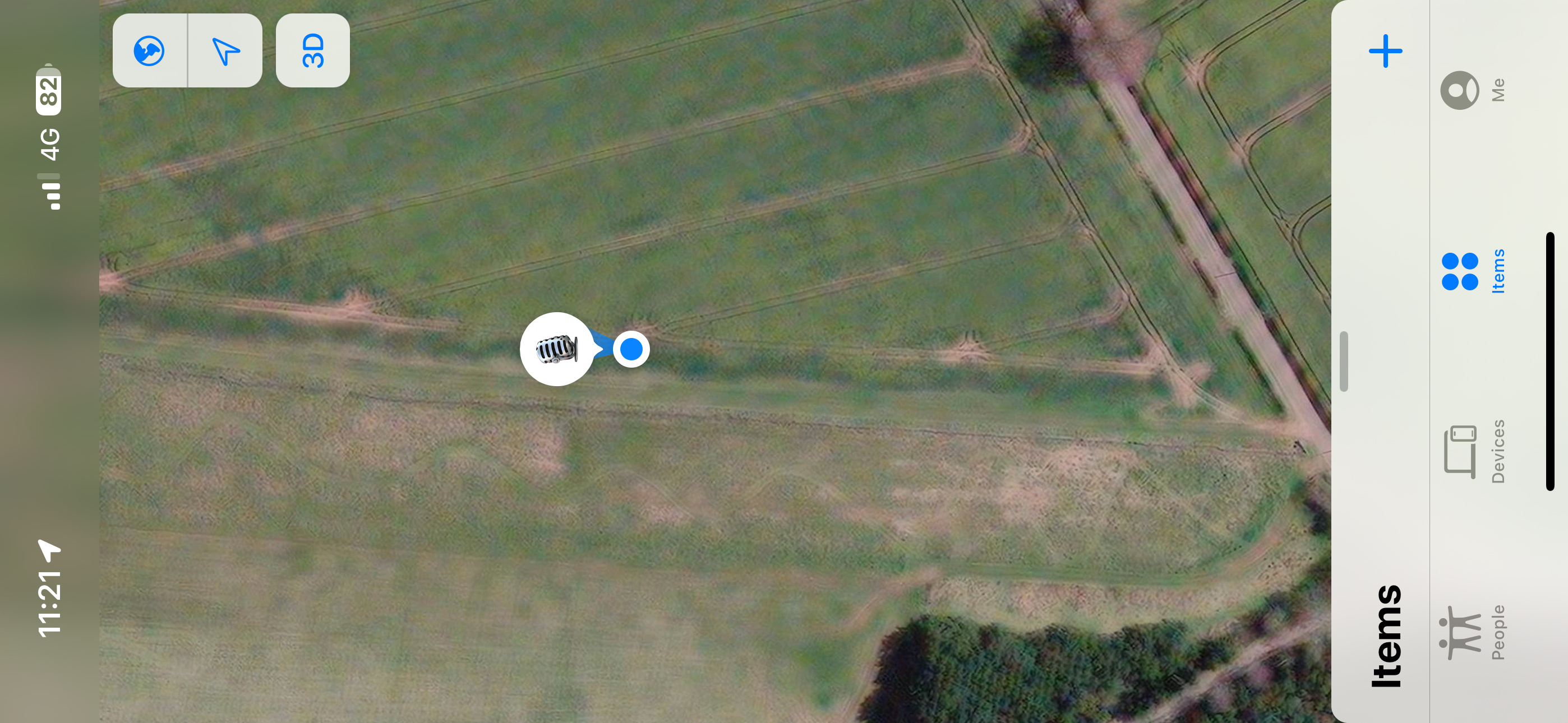
Most mics come paired out of the box so it's usually a case of ‘plug and play’. This was indeed the case with one of the mics. But when I took both mics out to record a chat with my brother the second mic wasn’t paired and I didn’t have the manual to hand, so I had to talk solo to camera rather than do a two-handed interview. This was OK for my mic distance test. On returning home and reading the manual the pairing process turned out to be easy - simply turn on the transmitter mic and then double press its button within 30 seconds to pair it with the receiver. The receiver has a handy green light that flashes when a transmitter isn’t connected but turns solid green when each mic is linked. Despite pairing the mic I found that I needed to repeat the pairing processes on one another occasion.
To finish off my test of the Godox Cube-SC I wired up myself and my brother John while he worked on his vintage WW2 Willys jeep. Despite lots of engine noise both of our voices sounded strong and clear as you’ll hear from the supporting video. I also used the kit to interview the curator of a museum and the lack of wires meant he was free to roam about while sounding loud and clear. The transmitter is so small and discrete that I nearly left the location without recovering it from my interviewee.
One last thing! Another new feature that I’ve not encountered before in a wireless mic is the ability to remote control your smartphone’s camera app from the mic transmitter. A double tap on the transmitter’s button causes your camera app to start and stop recording. I like to manually start recording by tapping the camera app button so that I know that I am actually recording, but a remote control could be handy if you’re a solo operator controlling your smartphone from a distance.
Godox Cube-SC: Verdict
As most people will be facing the camera when they record an interview or a presentation, then the signal dropout on the Godox Cube-SC isn’t a big issue. However, if you need a more powerful wireless mic that can be still heard when it loses line of sight at a distance, check out the Godox Virso system in our Alternatives section. The Godox Cube-SC should be attractive to social media content creators who need a compact mic kit that they can set up quickly and easily and then talk to the camera wirelessly while producing a rich clear sound. The built-in NR (Noise Reduction) is effective, so that will save you extra time removing noise in the edit.
| Features | Smartphone remote control, 48kHz/24-bit audio and compatible with Apple’s Find My app | ★★★★☆ |
| Design | Compact and quick to deploy. The smallest mic kit we’ve tested. | ★★★★☆ |
| Performance | Clean clear sound though prone to drop out at a distance if you turn your back. | ★★★☆☆ |
| Value | Relatively cheap as these things go, though the Lightning version is a little more expensive. | ★★★★☆ |
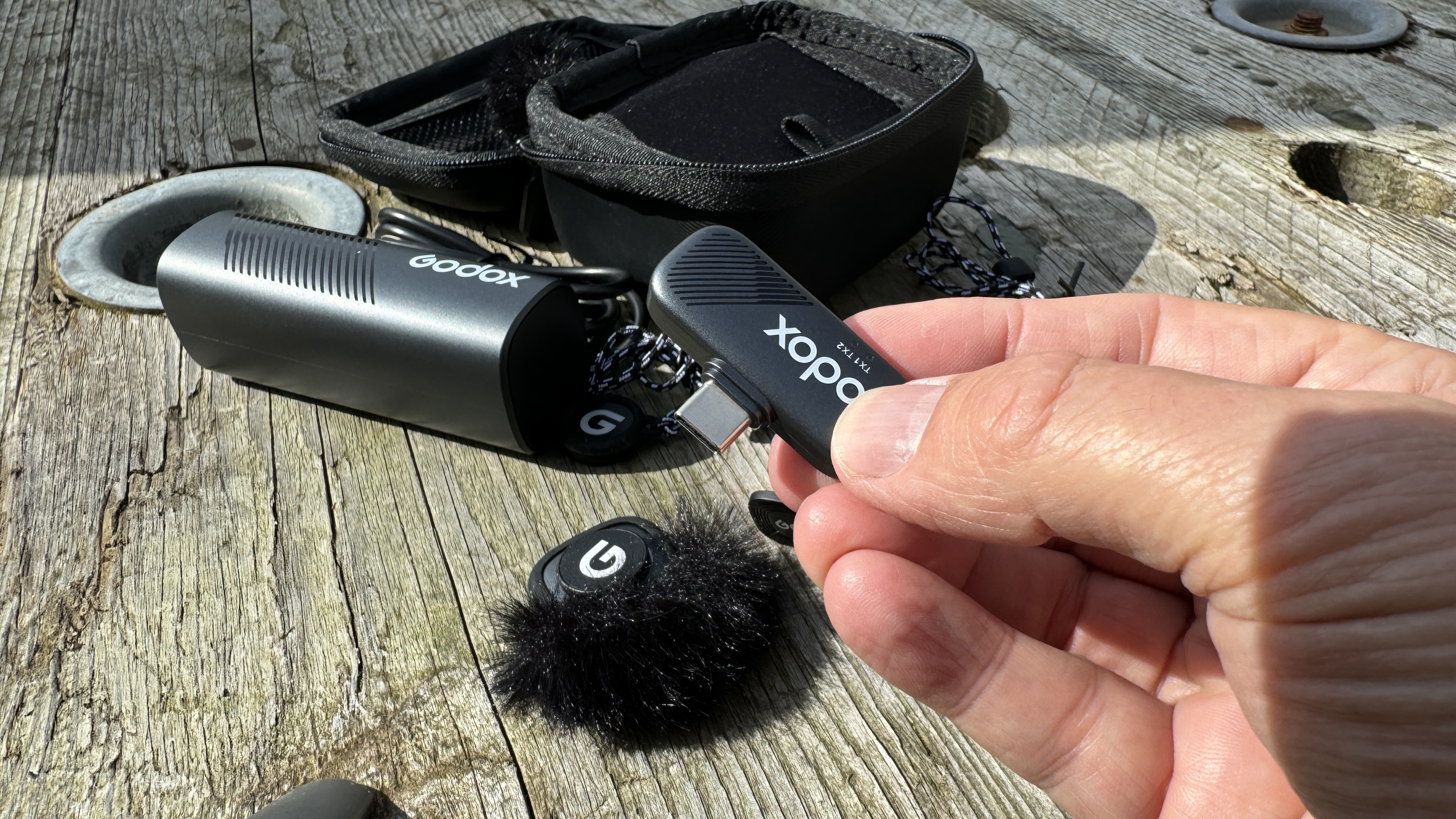
✅ Buy it...
- You need to remote trigger recording via a transmitter
- You need a pocket-size case
- You need to track the kit via Apple’s ‘Find My’ app
🚫 Don't buy it...
- You need a strong signal with no drop out
- You’re a DSLR user
Alternatives
Both of the Godox Virso’s transmitters and the receiver are already paired they work straight out of the box. The option to record directly onto a transmitter via a micro SD card provides extra peace of mind if you are worried about signal dropout, but unlike the Godox Cube-SC, there was no signal dropout from the Godox Virso even from behind a thick wall at a distance of approximately 100 meters! If you own a Sony camera then it’s worth considering the Godox Virso S (S for Sony) version, as its receiver’s hot shoe adaptor is designed to slot into a Sony camera’s Multi-Interface shoe to provide a better signal than you’d get using traditional a 3.5 mm connection.
If you want a kit that’s almost as small and light as the Godox Cube-SC, then the Hollyland Lark M2 is as close as you’re going to get. Like the Cube-SC, the Lark M2 has two tiny magnetically attached transmitters and a little receiver that you plug straight into your smartphone (though make sure that you buy the Lightning adaptor version if you have an iPhone that’s older than an iPhone 15. Unlike the Cube-SC we didn’t encounter any signal drop out from the Lark M2, though to be fair we didn’t walk as far away with the Lark as we did with the Cube-SC.
George has been freelancing as a photo fixing and creative tutorial writer since 2002, working for award winning titles such as Digital Camera, PhotoPlus, N-Photo and Practical Photoshop. He's expert in communicating the ins and outs of Photoshop and Lightroom, as well as producing video production tutorials on Final Cut Pro and iMovie for magazines such as iCreate and Mac Format. He also produces regular and exclusive Photoshop CC tutorials for his YouTube channel.
